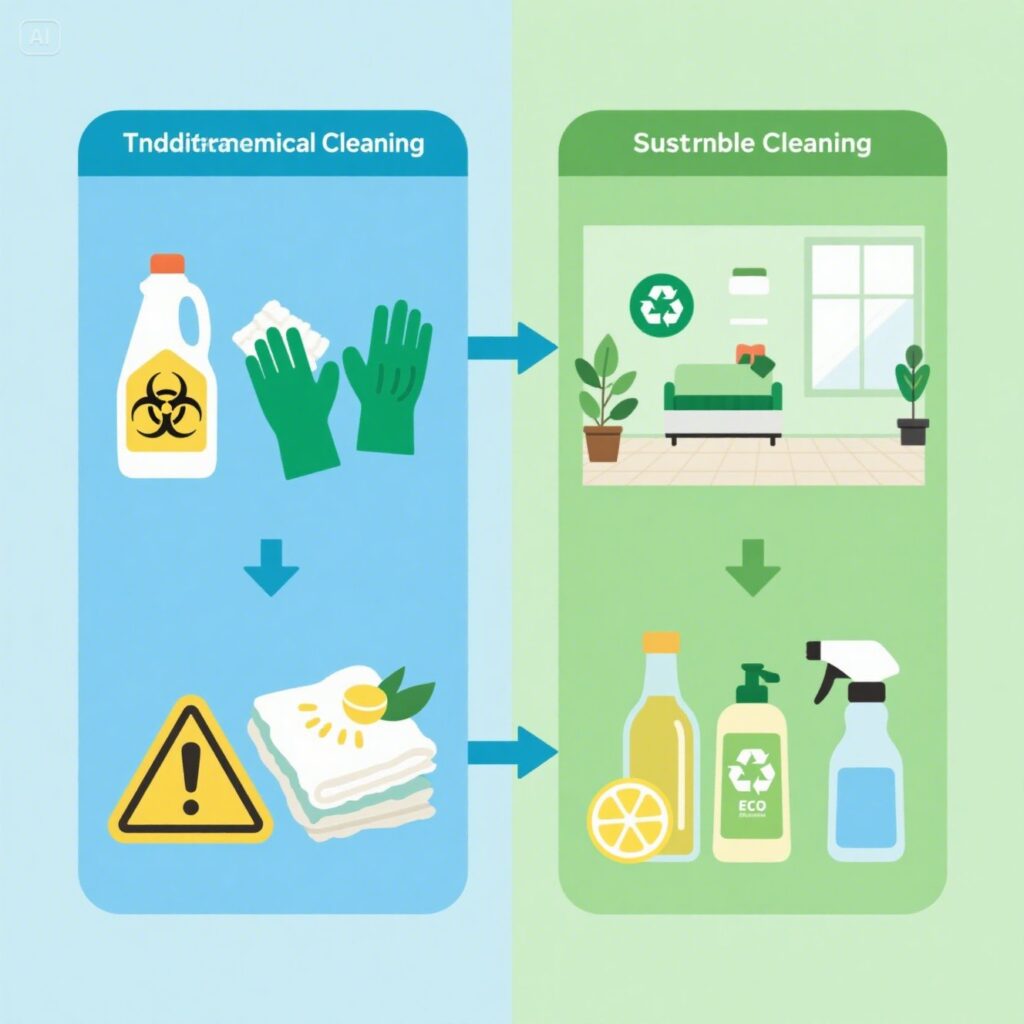Meta Description:
Discover how the cleaning industry is shifting from harmful chemicals to sustainable, eco-friendly solutions for a greener and safer future.
Introduction
As industries around the world continue to prioritize eco-conscious operations, the cleaning sector is also undergoing a major transformation. Driven by growing environmental awareness, new regulations, and consumer demand, sustainable cleaning is evolving rapidly. From eco-friendly materials to smart automation, the future promises a cleaner, greener path forward.

The Shift Toward Eco-Conscious Products
To begin with, traditional cleaning products have long relied on harsh chemicals, many of which harm both health and the environment. However, this trend is being reversed. Increasingly, manufacturers are using plant-based and biodegradable ingredients instead of synthetic compounds. Furthermore, companies are redesigning packaging to make it recyclable or to use post-consumer materials. As a result, we have already observed a significant reduction in environmental waste.
Automation and Smart Cleaning Technologies
Moreover, automation is shaping the future of sustainable cleaning. Companies widely adopt robotic cleaning devices that can be programmed to use minimal water and energy. Additionally, AI-powered cleaning systems optimize chemical use and detect dirt levels in real time, ensuring that they do not waste resources. These technologies not only boost efficiency but also significantly reduce human exposure to allergens and pollutants.
The Role of Reusables and Waste Reduction
Businesses are increasingly using reusable cleaning materials like microfiber cloths and recycled cotton rags. These alternatives replace single-use wipes and paper products, thus minimizing landfill waste. Many businesses that have adopted reusable cleaning tools have reported cost savings alongside reduced environmental impact. Consequently, a circular economy approach is gaining favor over the traditional linear model.
Supply Chain Transparency and Green Certifications
In addition, transparency across supply chains becomes essential. Companies now hold themselves accountable for the sustainability of their suppliers, which leads to a rise in eco-certifications and green labels. As sustainability reporting becomes standard, many cleaning product manufacturers disclose detailed information about their environmental impact. Furthermore, blockchain technology is being introduced to verify and secure data on raw materials, production methods, and carbon footprints, ensuring the information remains tamper-proof
Sustainable Cleaning in Commercial and Industrial Settings
Commercial facilities are adopting sustainability standards faster than ever. Hospitals, hotels, and manufacturing plants now follow green cleaning protocols. In particular, they emphasize sustainable sanitation, especially after the pandemic highlighted the importance of hygiene. These spaces now use low-toxicity, certified products and energy-efficient cleaning machinery.
What the Future Holds: Predictions Ahead
Looking ahead, several trends are expected to gain momentum.
- Waterless and chemical-free cleaning methods
- Greater investment in bio-enzymatic cleaners
- Increased government incentives for green compliance
- Smart sensors for real-time hygiene monitoring
- Expanded role of sustainable training programs for staff
Experts anticipate that sustainable cleaning will shift from a niche trend to an industry standard in the next decade.
Conclusion: A Cleaner World Starts Today
In conclusion, innovation, responsibility, and sustainability will shape the future of cleaning. As new technologies emerge and businesses embrace green practices, the industry moves toward a future where cleaning not only maintains hygiene but also preserves the planet. By adopting eco-friendly products, reusable tools, and smart systems, businesses can lead the way in creating a healthier, more sustainable world.
